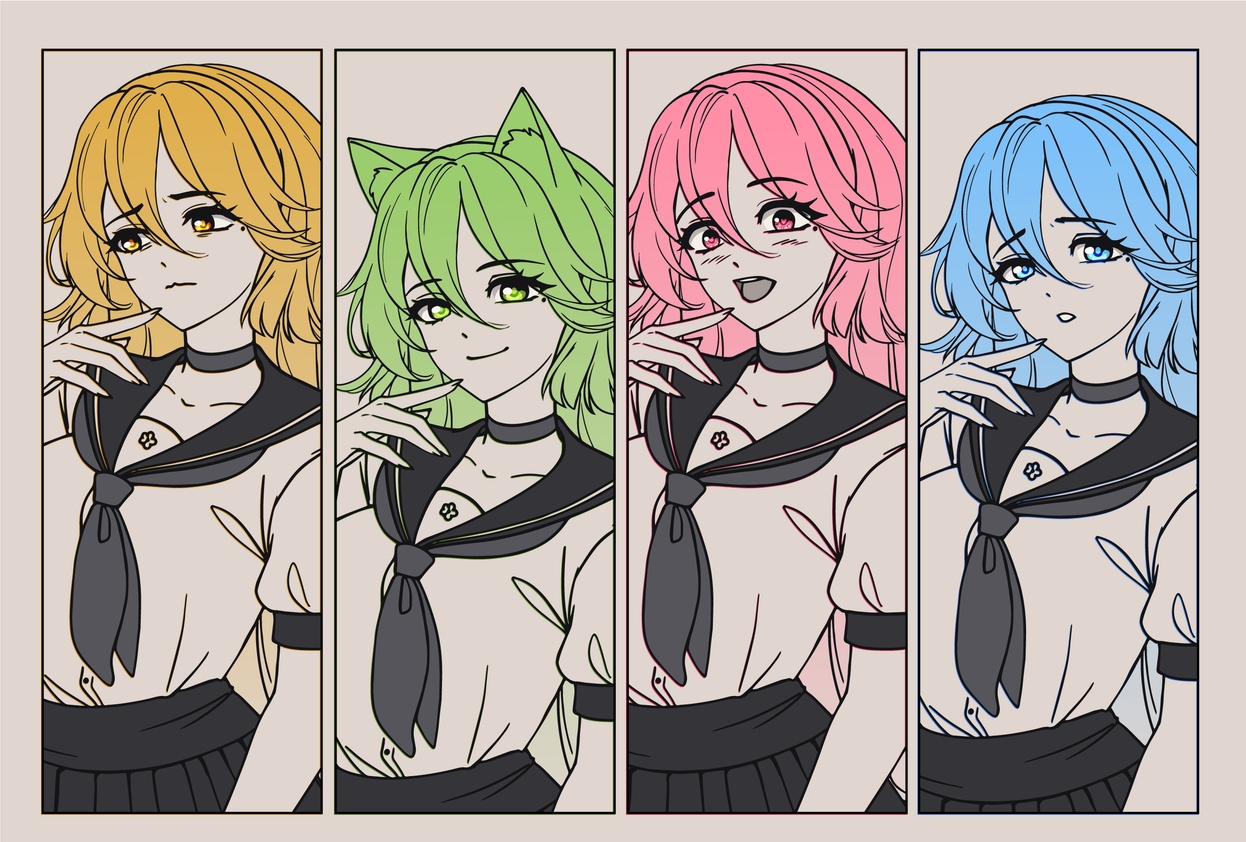Japanese schools aren’t just teaching; they’re sculpting the future of anime filmmaking. With a curriculum that dives deep into animation’s heart, students master the art of bringing dynamic characters to life, wield cutting-edge software like a sword, and embrace real-world production challenges head-on. These budding creators don’t just learn; they thrive in a cocoon of hands-on training, collaboration, and innovation, preparing to burst forth as industry leaders. But what sets these programs apart, and how do they guarantee their graduates are ready to redefine animation? Let’s peel back the layers.
Key Takeaways
- Specialized curriculum blends traditional artistry with modern digital technology, preparing students for anime production.
- Hands-on training programs allow students to craft original anime projects, developing both technical skills and teamwork abilities.
- Mastery of industry-standard software.
- Collaborative project work provides immersion in a real-world anime production environment, fostering critical teamwork skills.
- National and international showcases offer platforms for students to launch careers in the anime industry.
Specialized Curriculum Development
In Japanese anime schools, students are immersed in a curriculum specially designed to master animation, from exploring dynamic characters to bringing them to life with cutting-edge software. This isn’t just about learning the ropes; it’s about delving deeply into the world of anime, where every frame and scene is crafted with precision and passion. One is not just a student here; they are an emerging animator set to redefine the boundaries of animation.
The courses are meticulously structured, focusing on not just the how but the why of animation. Students investigate storytelling that captivates, character designs that resonate, and techniques that transform static sketches into vivid, moving stories. This is where Japanese anime schools stand out, blending traditional artistry with modern digital technology, preparing students to push the limits of what anime can be.
As students explore character animation, effects, and post-production editing, students will grasp the essence of what makes anime unique. Here, animation isn’t just taught; it’s lived. And as future animators, students are at the heart of it all, crafting the next generation of anime that’ll dazzle and inspire. Welcome to the vanguard of animation education, where a students journey as an animator begins.
Hands-On Training Programs
Industry Standard Software Mastery
Students delve into the mastery of pivotal digital tools, laying the groundwork for modern anime production. Japanese educational institutions lead the charge, ensuring students are proficient with these essential tools that define high-quality Japanese animation. Here’s the impact of mastering industry-standard software for aspiring filmmakers:
Collaborative Project Work
Students dive into the core of learning through collaborative project work in Japanese anime filmmaking programs. Here, they’re immersed in an environment that mirrors real anime production settings. More than just learners, they become integral members of a dynamic team, navigating storyboarding, animation, and sound design together. The experience is intense and invigorating, with educational benefits that go beyond the traditional classroom.
National and International Showcases
Students take center stage on a global platform, as Japan’s educational institutions launch their anime protégés through national and international showcases. These arenas are more than mere exhibitions; they’re catalysts propelling novices into the anime industry’s core. Students’ works bask in the spotlight, attracting attention from seasoned professionals and fellow students.
Mentorship and Networking Opportunities
Alumni Network Support
Building on direct guidance from industry professionals, alumni network support offers students a bridge to the real world of anime filmmaking, where successful graduates become student mentors and gateways to unparalleled opportunities. Through alumni mentorship programs, students are not just learning; students are gaining an insider’s perspective. Networking opportunities abound, from alumni events to industry collaborations and guest lectures. These networks are vital, opening doors to internships and job placements, ensuring students are not just dreaming of entering the anime industry but actively stepping into it. Alumni share invaluable industry insights, from overcoming challenges to seizing success, equipping students with knowledge and resources to forge a path in anime filmmaking.
Collaborative Project Initiatives
Students are immersed in the heart of anime creation with collaborative project initiatives, where mentorship and networking are important.
- Access to Industry Veterans: Get matched with industry veterans. Their guidance isn’t just advice; it’s a lantern in the dark, illuminating a students journey towards becoming a filmmaker.
- Collaborative Projects: Engage in hands-on anime production. Here, teamwork isn’t just encouraged; it’s necessary. Students forge connections that stretch beyond the classroom, into the very heart of the industry.
- Building Connections: Students will find they have access to professionals excited to welcome students. These aren’t just contacts; they’re potential collaborators, mentors, and friends.
Success Stories of Graduates
Graduates from Japanese animation schools are reshaping the anime industry with their groundbreaking work. These trailblazers, once students, now craft key frames, direct animation, and bring stories to life. They’re the force behind Studio Ghibli’s magic and the heartbeat of anime’s future. As Japanese animators, they’re not just following footsteps; they’re creating new paths.
| School Name | Notable Achievement | Industry Impact |
|---|---|---|
| Kyoto Seika University | Graduates becoming successful anime creators | Broadening anime’s creative pool |
| Tokyo Animator College | Students working on original anime projects | Injecting fresh narratives |
| Japan Animation & Manga College | Equipping graduates for both game and anime industries | Blurring industry lines |
These success stories aren’t just tales; they’re proof of the profound impact Japanese schools have on the anime filmmaking industry. By honing skills and igniting creativity, these institutions are not just educating; they’re empowering the next generation of animators to dream bigger, push boundaries, and create the anime masterpieces of tomorrow.
Challenges in Animation Education
Despite their passion, aspiring animators in Japan face steep hurdles, from scant on-the-job training to low pay and grueling hours. The animation industry’s reliance on a production committee system often sidelines the need for nurturing new talent, leaving many young animators to work in less than ideal conditions. This struggle is not just about getting through the door but thriving in an environment that often overlooks the basics of career growth and skill development.
Here’s a breakdown of the main challenges:
- Lack of On-the-Job Training: Without structured programs, animators are often left to navigate their careers without guidance, making it hard to improve or work based on a solid foundation.
- Unsustainable Working Conditions: The notorious low pay and long hours contribute to a high burnout rate, deterring talented individuals from pursuing a career in animation.
- Limited Opportunities for Original Work: The industry’s focus on commercial projects limits animators’ chances to work on Original Anime, stifling creativity and innovation.
To retain talent, the industry must offer more than just a foot in the door. It requires a commitment to fostering an environment where animators can learn, grow, and ultimately, thrive.
Future Prospects in Anime Filmmaking
Japanese schools are revolutionizing the path to becoming an anime filmmaker, with specialized programs that explore both the art and science of animation. You’re witnessing a transformative era where institutions like Kyoto Seika University and Tokyo Animator College aren’t just educational facilities; they’re incubators for the next generation of anime creators. These aren’t your typical classrooms — they’re battlegrounds where passion meets precision, creativity confronts challenge, and dreams start taking a definite shape.
At Tokyo Animator College, where one is not just a student; they are a part of a production team, working on original anime projects that could be the next big hit. Meanwhile, Kyoto Seika’s manga department thrusts students into a world where storytelling is king, and a student’s vision could redefine genres. And let’s not forget Japan Animation & Manga College in Niigata City, where the future meets the present with training in cutting-edge 3D software and VTuber creation.
With such thorough training, students are not just prepared for the anime industry; they are a beacon for production companies seeking fresh, innovative talent. Schools across Japan are not just educating; they’re empowering vocational school graduates to become the anime creators who will lead the industry into a new era.
Conclusion
Japanese schools are not just teaching; they’re transforming students into a pioneering anime filmmakers. With specialized curriculum and hands-on training, studnets master the art of animation, collaborate on groundbreaking projects, and showcase their work globally. The mentorship students receive and the connections will help to catapult their career.



